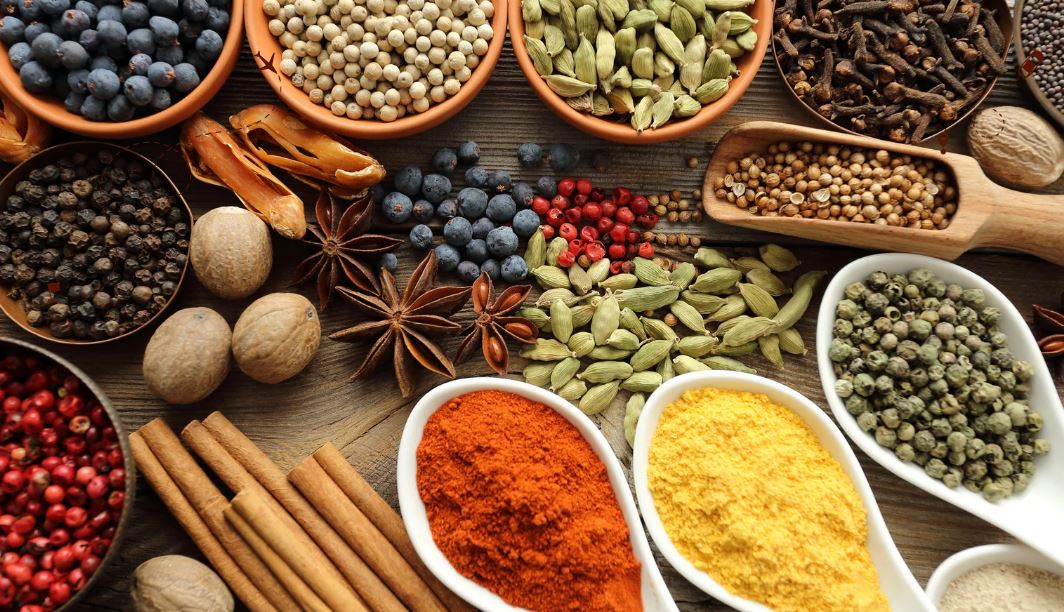India’s Spice Board Issues New EtO Contamination Guidelines
The Spices Board of India has recently issued detailed guidelines to tackle the problem of ethylene oxide (EtO) contamination in spices exported from India. This action was prompted by the bans imposed by Hong Kong and Singapore on the sale of popular Indian spice brands like MDH and Everest, after these products were found to contain the carcinogenic chemical ethylene oxide. The contamination has raised significant quality concerns among international buyers and has led to a mandatory recall of these products from the market.
Use of Ethylene Oxide
Ethylene Oxide is a chemical commonly used for the sterilisation and fumigation of agricultural products due to its effectiveness in killing bacteria, fungi, and insects. However, due to its potential health risks, including carcinogenic effects, its presence in food products has become highly regulated globally.
Spices Board Guidelines
To address these issues, the Spices Board’s guidelines provide a clear framework for exporters:
- Prohibition of EtO Use: Exporters are instructed to avoid the use of EtO across all stages of the spice production and supply chain. This includes not only the treatment processes but also transportation, storage, and packaging.
- Testing and Monitoring: Regular testing for EtO contamination is mandated. This includes checking raw materials, processing aids, and finished goods. Any instances of contamination detected must be followed by a thorough root cause analysis to implement effective preventive measures.
- Alternative Sterilisation Methods: The guidelines encourage the use of alternative sterilisation methods such as steam sterilisation, irradiation, and other approved methods by the Food Safety and Standards Authority of India (FSSAI).
- Critical Control Points: Exporters must identify ethylene oxide as a hazard and incorporate critical control points within their Hazard Analysis Critical Control Points and Food Safety Plan.
Additional Safety Measures
The guidelines also set out additional safety measures to enhance the quality of spices:
- Rejection of Contaminated Raw Materials: Spices and herbs known to contain microbial contaminants not reducible to acceptable levels through normal processing must be rejected.
- Prevention of Cross-Contamination: Effective measures must be taken at all processing stages to prevent cross-contamination. This includes handling and packaging practices that protect against moisture, pest infestation, and microbial growth.
- Packaging and Transportation Requirements: The use of new, non-porous containers for packaging, ensuring clean and dry transportation conditions, and monitoring environmental conditions during transit to prevent contamination.
Impact on Trade
The implementation of these guidelines is critical not only for public health but also for the economic impact it bears. In 2023-24, India’s spice exports were valued at USD 4.25 billion, making up 12 percent of the global spice trade. The enforcement of these guidelines helps reassure international markets of the quality and safety of Indian spices, potentially stabilizing and increasing India’s share in the global spice market. This is especially significant considering the competitive nature of the global spice trade, with China leading at USD 8 billion in exports in 2023.
About Ethylene Oxide contamination
Ethylene Oxide contamination refers to the presence of ethylene oxide, a colourless gas used primarily for sterilizing medical equipment and as a pesticide, in products or environments where it poses health risks. Considered a potent carcinogen by agencies like the U.S. EPA, ethylene oxide can contaminate foods, spices, or cosmetics through fumigation or sterilization processes. Inhalation, ingestion, or skin exposure can lead to acute symptoms such as respiratory irritation and long-term effects including leukemia and breast cancer. This raises significant concerns about workplace safety and consumer product standards, necessitating stringent regulation and monitoring.
Month: Current Affairs - May, 2024
Category: Economy & Banking Current Affairs






